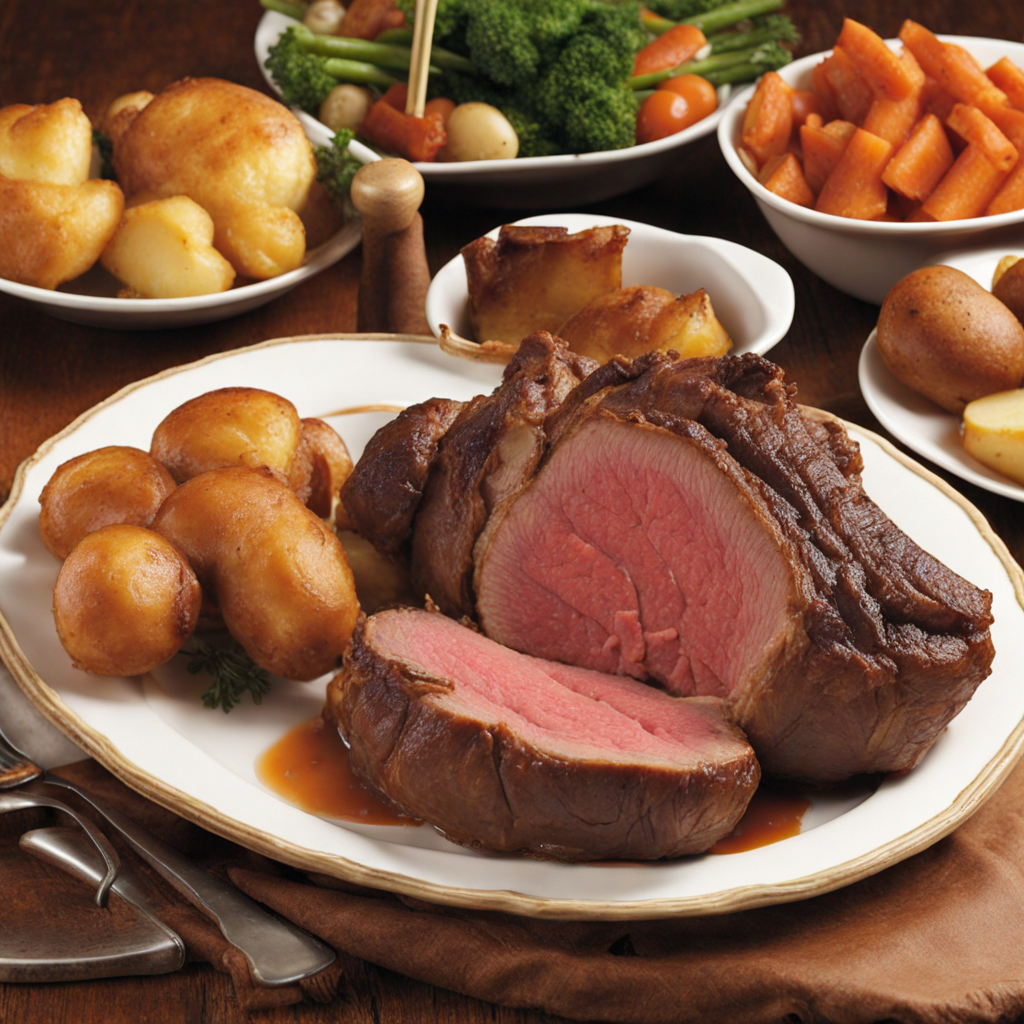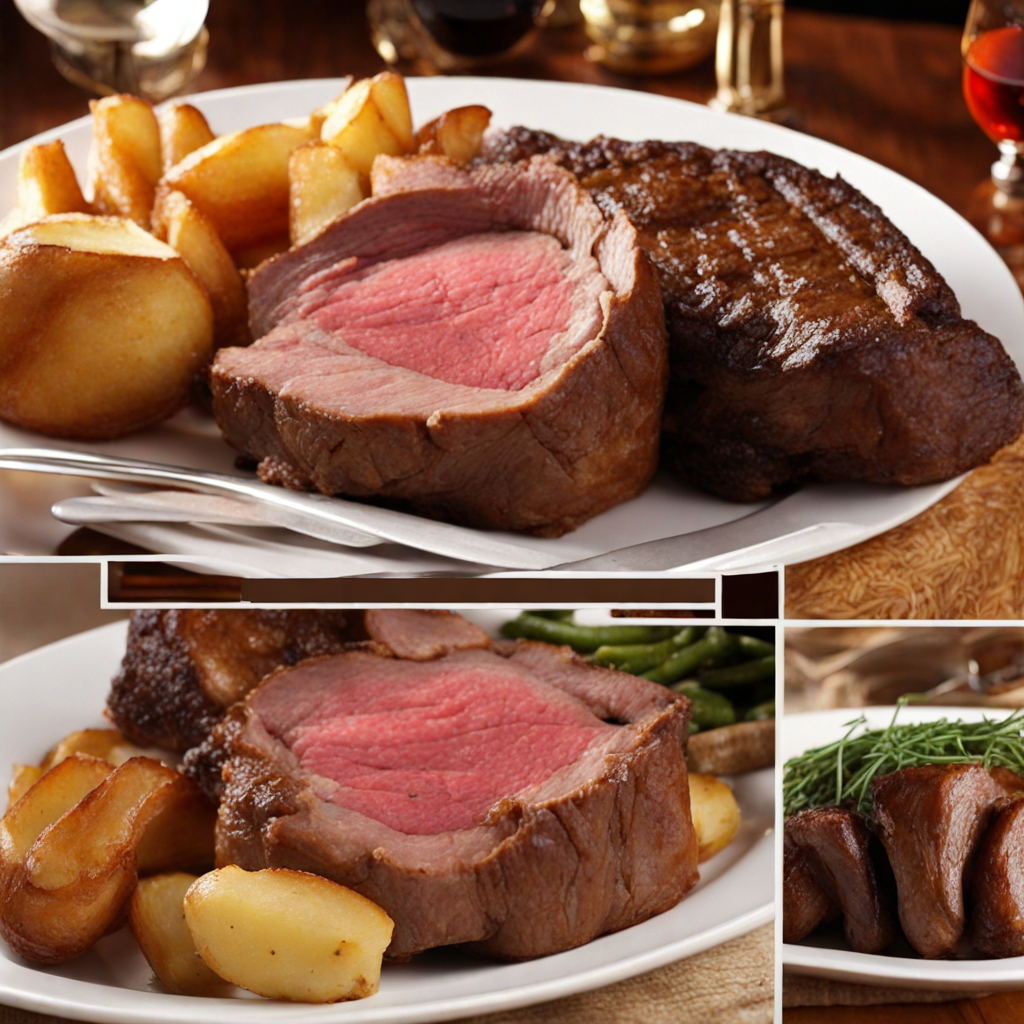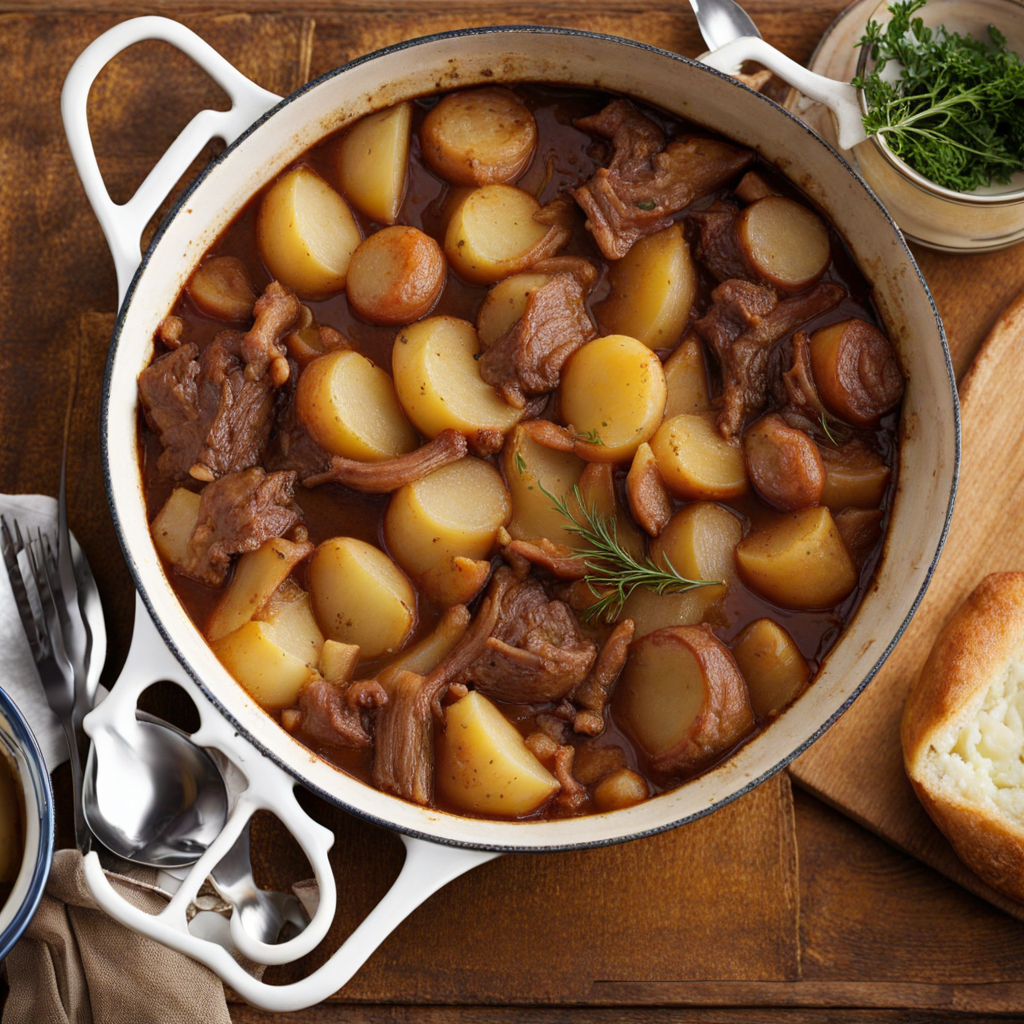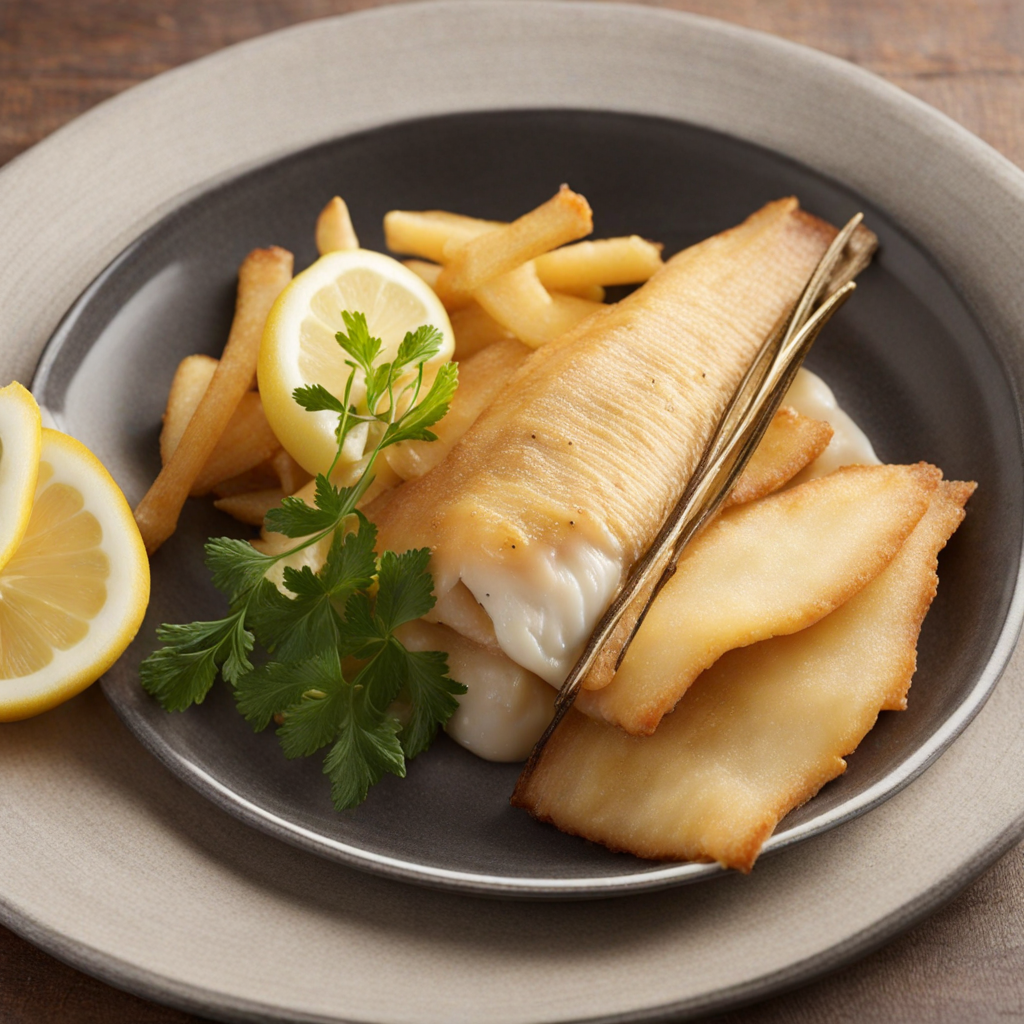Roast Beef and Yorkshire Pudding
Roast Beef and Yorkshire Pudding is a classic British dish that embodies comfort and tradition. The centerpiece, succulent roast beef, is typically seasoned with a blend of salt and pepper before being slow-cooked to perfection. The result is tender, juicy meat that is bursting with flavor, often enhanced by the inclusion of herbs such as rosemary or thyme. This dish is usually served with a rich gravy made from the meat's drippings, adding an extra layer of indulgence to each mouthful. The roast beef is often sliced thin and served warm, making it an inviting main course for any meal. Accompanying the roast beef is the iconic Yorkshire pudding, a delightful baked batter that puffs up to create a light, airy texture. Made from a simple mixture of flour, eggs, and milk, Yorkshire pudding is poured into hot oil and baked until golden brown. The result is a crispy exterior with a soft, chewy interior that perfectly complements the savory roast beef. Traditionally, these puddings are served alongside the meat, often used to soak up the delicious gravy, providing a satisfying contrast in texture and flavor. This dish is not just a meal; it is a cultural experience, often enjoyed during Sunday roasts or special occasions. Served with a side of seasonal vegetables like carrots, peas, and potatoes, Roast Beef and Yorkshire Pudding offers a wholesome and hearty dining experience. The combination of the rich, savory beef with the light, fluffy pudding creates a unique balance that has made it a beloved staple in British cuisine. Each bite tells a story of culinary history, making it a must-try for anyone looking to explore new and exciting flavors.
How It Became This Dish
The History of Roast Beef and Yorkshire Pudding: A Culinary Tradition of the United Kingdom Roast beef and Yorkshire pudding is more than just a dish; it is a cultural icon that embodies the culinary heritage of the United Kingdom. This quintessentially British meal has evolved over centuries, reflecting the sociopolitical landscape, regional variations, and culinary innovations that characterize British food history. Its origins, cultural significance, and development over time tell a story of tradition, community, and resilience. Origins and Early History The roots of roast beef can be traced back to the medieval period, when the practice of roasting meats became increasingly popular among the nobility. Meat was often a symbol of wealth and power, with the upper classes enjoying lavish feasts that featured various roasted meats, including beef, lamb, and game. The tradition of roasting beef specifically gained prominence in the 15th and 16th centuries, particularly in the regions of England where cattle farming was prevalent. Yorkshire pudding, on the other hand, has more humble beginnings. It originated in the north of England, particularly in Yorkshire, in the 18th century. The dish was initially known as "dripping pudding," as it was made by mixing flour, eggs, and milk with the fat that dripped from the roasting meat. The pudding was typically cooked in the oven beneath the beef, allowing it to absorb the flavorful drippings. This practical dish was not only economical but also served to stretch the meal further, making it a staple in working-class households. Cultural Significance By the 19th century, roast beef and Yorkshire pudding had become emblematic of British cuisine. The phrase "the roast beef of Old England" emerged during this time, symbolizing national pride and the idea of British resilience. Roast beef was often considered a staple of Sunday dinners, and it became a focal point for family gatherings and community celebrations. The famous British author Charles Dickens immortalized the dish in his works, describing the warmth of family life and the joy of sharing a meal. The Victorian era heralded a rise in the popularity of roast beef, with the dish being served in homes and public houses alike. As the Industrial Revolution transformed society, the ritual of Sunday roasts became a cherished tradition for working families, providing a moment of respite from the week’s labors. Development Over Time As the 20th century progressed, roast beef and Yorkshire pudding continued to adapt. The post-World War II era saw a shift in dietary habits, with an increased focus on convenience and efficiency in meal preparation. The advent of ready-made meals and the rise of fast food introduced new dynamics into British dining culture, yet roast beef maintained its status as a beloved comfort food. In the 1970s and 1980s, there was a renewed interest in traditional British cuisine, spurred by the rise of the "food revolution" and a desire to celebrate local ingredients. Chefs began to experiment with the classic roast, introducing new cuts of meat and cooking methods. This period also saw the establishment of gastropubs, where the emphasis on high-quality, locally sourced ingredients brought roast beef and Yorkshire pudding back into the culinary spotlight. The 21st century has brought further innovation to this classic dish. Contemporary chefs have embraced the concept of fusion cuisine, incorporating global flavors and techniques into traditional British recipes. As a result, variations of roast beef and Yorkshire pudding have emerged, from spicy versions infused with Asian spices to vegetarian adaptations featuring roasted vegetables and alternative protein sources. Modern Interpretations and Global Influence Today, roast beef and Yorkshire pudding remain staples in British households and pubs. The dish is often served with a variety of accompaniments, including rich gravy, horseradish sauce, and seasonal vegetables. The Sunday roast has become a cherished ritual for many families, embodying the values of togetherness and tradition. Moreover, the influence of British cuisine has reached global shores. Roast beef, in particular, has found its way into international menus, with variations appearing in countries with British colonial histories. In Australia and New Zealand, for example, the Sunday roast has become a similar cultural phenomenon, while in North America, it has been embraced in various forms, including sandwiches and casual dining options. In recent years, there has also been a resurgence of interest in traditional cooking methods and local sourcing, with many chefs advocating for sustainable practices and a return to home-cooked meals. This movement has led to a renewed appreciation of dishes like roast beef and Yorkshire pudding, as people seek to connect with their culinary heritage. Conclusion The story of roast beef and Yorkshire pudding is a reflection of the broader narrative of British food history. It is a dish that has transcended social classes and adapted to changing times while remaining a symbol of national identity and familial bonds. From its humble beginnings as a practical way to use meat drippings to its status as a beloved Sunday feast, this culinary duo has endured through centuries of change. As we continue to navigate the complexities of modern dining, roast beef and Yorkshire pudding serve as a reminder of the power of food to bring people together. Whether shared at a family table, celebrated in a pub, or reimagined in a contemporary kitchen, this dish remains a testament to the enduring legacy of British culinary tradition. The rich flavors, comforting textures, and historical significance of roast beef and Yorkshire pudding ensure that it will continue to hold a special place in the hearts and homes of people across the UK and beyond for generations to come.
You may like
Discover local flavors from United Kingdom







